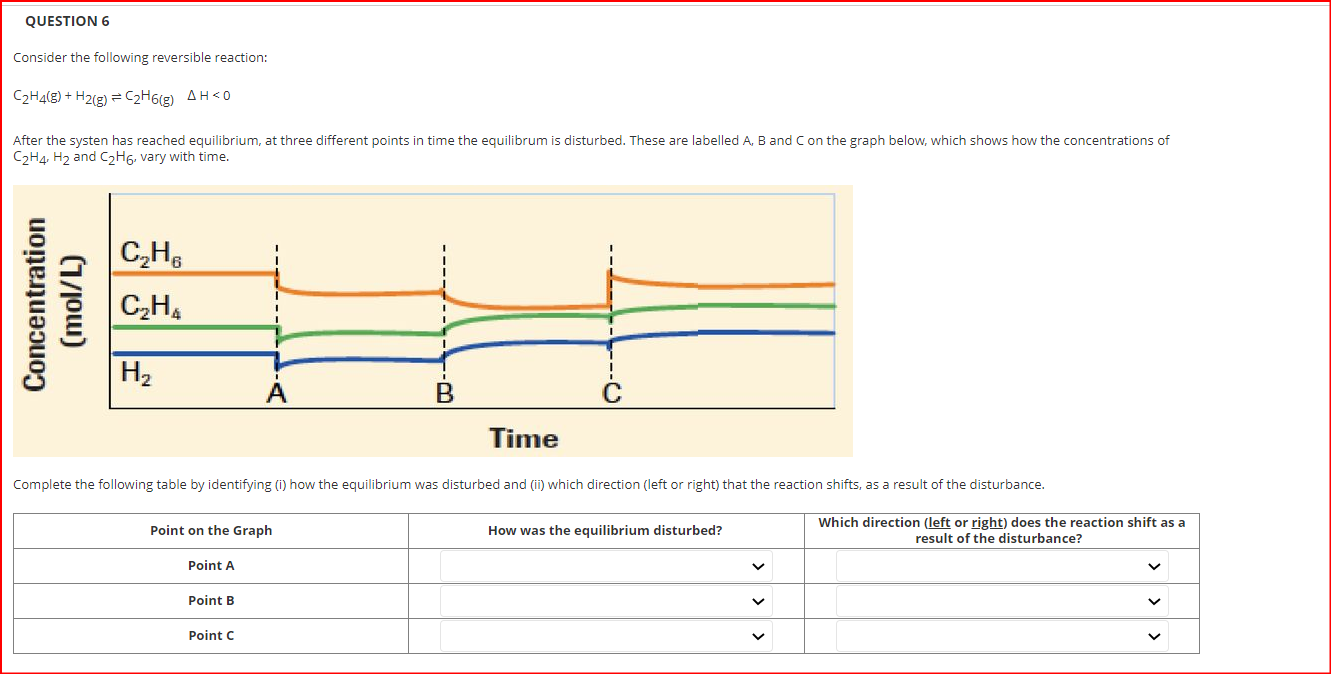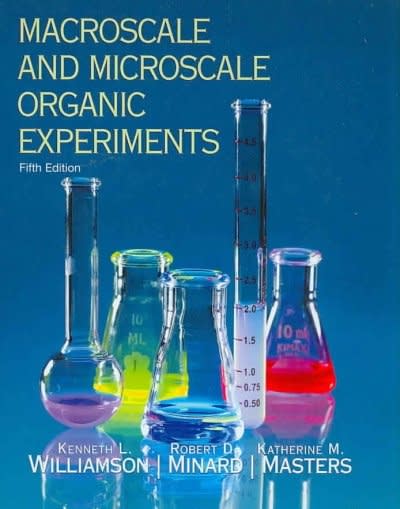Question
Consider the following reversible read 2 NOBr (g) 2 NO (g) + Br 2 (g) H Some NOBr is introduced into a container and the
Consider the following reversible read
2 NOBr (g) 2 NO (g) + Br2 (g) H
Some NOBr is introduced into a container and the reaction is allowed to reach equilibrium.
Once the system has reached equilibrium, some disturbances have been made.
Identify the effect of each of the following disturbances (reaction shifts left, reaction shifts right or no change).
(a) Some NO is removed from the system reaction shifts leftreaction shifts rightno change
(b) The temperature is decreased reaction shifts leftreaction shifts rightno change
(c) The volume of the reaction vessel is decreased, increasing pressure reaction shifts leftreaction shifts rightno change
(d) A catalyst is added reaction shifts leftreaction shifts rightno change
(e) An inert gas (Neon) is added at constant volume
QUESTION 3
-
Consider the following reversible reaction: CH4(g) + H2O(g) CO(g) + 3H2(g) H >0
Which of the following lists disturbances that would favour the forward reaction?
a decrease in temperature and a decrease in volume
a increase in temperature and a decrease in volume
a decrease in temperature and a increase in volume
a increase in temperature and a increase in volume
1 points
QUESTION 4
-
Consider the following reversible reaction:
2NO(g) + O2(g) 2 NO2(g) H
Which of the following changes alone would cause the value of Kc for this reaction to increase?
Decreasing the temperature
Increasing the temperature
Decreasing the volume of the reaction vessel
Increasing the volume of the reaction vessel
QUESTION 1
Identfy whether the following statements are True(T) or False (F)
(i) Chemical equilibrium means that all chemical reactions have stopped True (T)False (F)
(ii) Equilibrium can only occur in a closed system True (T)False (F)
(iii) Addition of catalyst favours the products True (T)False (F)
(iv) Reactions with a lower activation energy reach equilibrium faster
QUESTION 2
-
What is the result of a decrease in temperature of a system that is at equilibrium?

The endothermic reaction is favoured and the reaction rate decreases
The endothermic reaction is favoured and the reaction rate increases
The exothermic reaction is favoured and the reaction rate decreases
The exothermic reaction is favoured and the reaction rate increases
Step by Step Solution
There are 3 Steps involved in it
Step: 1

Get Instant Access to Expert-Tailored Solutions
See step-by-step solutions with expert insights and AI powered tools for academic success
Step: 2

Step: 3

Ace Your Homework with AI
Get the answers you need in no time with our AI-driven, step-by-step assistance
Get Started


